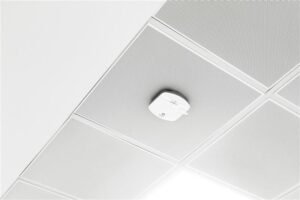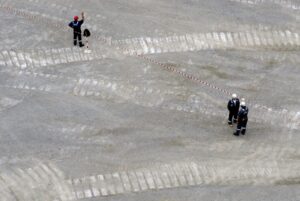Contents
RFID location tracking RTLS Systems
An RFID location tracking system provides companies with real-time data on the status and movement of employees. Such technology is built on active radio frequency identification technology. It is a groundbreaking way for businesses to maintain streamlined processes, yet is simple in how it operates.
The Basics Of RTLS - RFID Location Tracking
There are two types of RFID tracking; a passive RFID or an active RFID tracker and locator system. Both systems work in similar ways to track movement, but they are set up in different ways. Litum can help businesses set up an active RFID locator and tracker that allows you the benefits of real-time monitoring and tracking of assets.
Passive RFID systems do not actively track movement in real-time thus they’re not used in mobile RFID readers. They can only track assets and people when they pass through a gateway or near an RFID reader. The drawback to passive RFID tracking is that it has a limited range. The passive RFID tag is only powered by the radio signal that it receives from the RFID locator. Yet, its return signal is much weaker than that sent from an active RFID tag.
So, a passive system may only trigger on tags up to 7 meters away. This is usually good enough to track when assets or people leave rooms, the building, or go to specific work areas.
Location Tracking - RTLS with Active RFID Systems
Active RFID location tracking systems are a little more exciting. They allow businesses to track the real-time movement of assets and people throughout a monitored area. Litum RTLS systems can track tags from afar with the highest accuracy available in the market. Active tags can be set up with panic buttons for employees, and sensors for monitoring the workplace environment or equipment operation. This data is sent along with the location signal to the reader.
Active RFID location tracking uses powered tags, which contain an internal battery. This energy source allows the tag to send out a strong, continuous signal that an RFID tracker and locator can pick up. Most RFID tags have batteries that can provide power for weeks or months before needing to be recharged.
How This Data Makes It Onto Your Computer Screen
The information picked up by an RFID tracker and locator is sent to a computer containing Litum RFID location tracking system software. It interprets the data and displays it as a moving image on an overlay of the building map.
With the map screen open, you’ll be able to watch as the signals from active ID tags ping off locators throughout the building. These active RFID tags will be shown moving second-by-second around the floor.
Total Awareness of Workplace Activities
Both passive and active RFID location tracking allows companies to get an intimate view of the goings-on in different work areas. However, an active RFID tracking system allows companies to take asset monitoring to another level that simpler passive RFID tags can’t do. From the manufacturing facility to the accounting office, you’ll know where employees are, what equipment is used, and where inventory goes instantly.
Litum uses active RTLS tags that can be used for specific reasons such as integration with asset tracking software. To find out more about how Litum can help improve your operations, contact us now.




